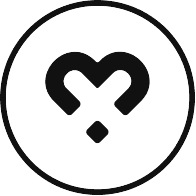As our understanding of sexuality and gender grows, terms like heteroflexibility are helping people describe and navigate their unique experiences of attraction. While labels aren’t everything, they can provide clarity and validation—especially when traditional categories like “straight” or “bisexual” don’t quite capture your experience.
So, what does it mean to identify as heteroflexible? Let’s explore how this term creates space for people who are mostly attracted to one gender but occasionally experience attraction to others—and how it shows up in real life.
What Does Heteroflexible Mean?
Simply put, heteroflexible describes a sexual orientation where someone is primarily attracted to people of one gender but may also experience occasional or situational attraction to others. It’s not quite the same as being bisexual or pansexual, where attraction to multiple genders is a consistent part of someone’s identity. Instead, heteroflexibility acknowledges that attraction to different genders might happen less frequently or under specific circumstances.
For those who identify as heteroflexible, it’s a way to say, “I’m mostly attracted to one gender, but I’m open to possibilities.” This label creates room for exploration without the pressure to fit neatly into more traditional boundaries of sexuality.
Heteroflexible vs. Bisexual and Pansexual: Exploring the Nuances
While heteroflexibility, bisexuality, and pansexuality all involve attraction to more than one gender, they differ in scope and personal meaning.
- Bisexuality: People who are bisexual experience attraction to two or more genders, including non-binary and trans people. The term “bisexual” has been around for decades and predates “pansexual.” Many people continue to identify as bisexual, not because they exclude non-binary or trans individuals, but because it reflects how they’ve long understood themselves. For them, bisexuality remains an inclusive and comfortable term.
- Pansexuality: Pansexual people are attracted to others regardless of gender. Their attraction isn’t tied to specific gender identities but instead focuses on the individual.
- Heteroflexibility: Heteroflexible people are primarily attracted to people of a different gender from their own but are open to occasional attraction beyond that. Think of it as being “mostly straight with a twist.” Unlike bisexuality or pansexuality, heteroflexibility is more about infrequent or situational experiences rather than consistent attraction across genders.
Each of these identities is valid and offers a unique way for people to understand and express their attraction.
Heteroflexibility in Practice: What It Can Look Like
For those who identify as heteroflexible, experiences can vary widely:
- Occasional Attraction: Some people might experience a one-time crush on someone of the same or another gender, like a close friend or a celebrity, without it redefining their primary attraction.
- Contextual Feelings: Others may find that attraction arises in specific contexts—such as during self-discovery or in an environment that feels especially open and affirming.
- Casual Exploration: For some, heteroflexibility might mean being open to same-gender or non-binary encounters without adopting a bisexual or pansexual label. It’s about honouring occasional attractions without feeling the need to entirely reframe their identity.
Heteroflexibility allows people to embrace these experiences without pressure or expectation to adopt a more encompassing identity.
Identifying as Heteroflexible: Who Chooses This Label?
Heteroflexibility resonates with people who feel the term “straight” doesn’t quite fit but who don’t fully identify as bisexual or pansexual. It’s a label that acknowledges the fluidity of attraction while still centring a primary orientation.
- Exploration Without Pressure: Some people embrace heteroflexibility because it allows them to explore their attractions without feeling boxed in by rigid definitions.
- Authenticity and Comfort: For others, identifying as heteroflexible reflects their reality—whether they experience rare, fleeting attractions to people of another gender or feel a situational openness to new connections.
Ultimately, the label is about personal comfort. It gives people the freedom to acknowledge occasional attractions without redefining their primary orientation.
Misconceptions About Heteroflexibility
Like many sexual orientations, heteroflexibility can be misunderstood. Here are a few common misconceptions:
- “It’s just a phase”: People often dismiss heteroflexibility as a temporary curiosity. For many, though, it’s a genuine reflection of their experience—not a stepping stone to another label.
- “It’s confusion or indecision”: The binary thinking that dominates discussions of sexuality can make flexible orientations seem less valid. Heteroflexibility challenges these rigid norms, embracing the idea that attraction is diverse and often fluid.
- “It’s performative”: Some assume occasional same-gender attraction within heteroflexibility is about rebelling against norms or seeking attention. In reality, being heteroflexible is about honouring authentic feelings, not fulfilling societal expectations.
The Heteroflexible Flag: Symbols and Representation
While the heteroflexible flag isn’t as widely recognised as those for other sexual orientations, proposed designs often emphasise themes of openness, flexibility, and fluidity. Representation matters, and symbols like flags help heteroflexible individuals feel seen within the broader LGBTQIA+ spectrum.
Other Terms and Identities: Homoflexible, Pansexual, and More
Heteroflexibility exists within a broader spectrum of flexible sexual orientations. Other terms include:
- Homoflexible: Homoflexible people are primarily attracted to the same gender but occasionally experience attraction to others. It’s the mirror image of heteroflexibility.
- Bi-Curious and Fluid: These terms reflect other forms of flexibility and exploration, offering further ways to describe the complexity of human attraction.
Each identity reflects unique experiences, showing there’s no need to force anyone into a label that doesn’t fully fit.
Embracing a Fluid Sexual Orientation
Identifying as heteroflexible—or anywhere on the spectrum of flexible sexual orientations—is about celebrating the ways attraction can shift and evolve. Embracing this fluidity allows for curiosity, self-discovery, and a rejection of rigid expectations around sexuality.
Sexuality is deeply personal and often changes over time. For those exploring heteroflexibility, it’s okay to let attraction unfold naturally, without rushing to “settle” on a definitive label. Whether occasional or frequent, your experiences are valid and worth honouring.
Conclusion
Heteroflexibility reminds us that sexuality is expansive, diverse, and beautifully personal. It creates space for people who are mostly attracted to one gender to explore occasional attractions without pressure or judgment. Whether it’s about leaving room for possibility or simply acknowledging the complexity of your feelings, identifying as heteroflexible allows you to be true to yourself.
If you’re exploring your sexual identity, remember: labels are tools to help you, not boxes to confine you. Embrace your journey at your own pace, and know that every step toward self-understanding is valid. After all, love and connection come in many forms—and that’s something to celebrate.

Antonia J is a seasoned writer, editor, and consultant with over a decade of experience, specialising in topics that celebrate identity, diversity, empowerment, and intimacy. As a proud bisexual and neurodivergent woman, her work is fuelled by a passion for fostering acceptance, inclusivity, and meaningful conversations about human connection and liberation.She has collaborated with pioneering brands such as Killing Kittens, WAX, Coco de Mer, Hunger Magazine, and The Diversity Standards Collective, bringing visions to life through impactful words, creativity and storytelling. Notable contributions include crafting articles with sex and relationship experts for Killing Kittens, shaping the WAX community’s inclusive values, and conceptualising Coco de Mer & Sotheby’s “Eroticism in Art” film. This project, a collaboration with acclaimed photographer and director Rankin, drew thought-provoking parallels between the worlds of art and sex and was showcased at Sotheby’s “Erotic Passion & Desire” event in 2018. Her writing has also featured in DIVA Magazine, the leading global publication for LGBTQIA+ women and non-binary individuals.Drawing from her extensive study and lived experience, Antonia’s work explores themes such as relationship dynamics, tantra, polyamory, unicorns, shibari, mindfulness and mental health awareness. Deeply inspired by the intersections of psychology, attachment theory, and personal transformation, she brings a knowledgeable and non-judgemental voice to the evolving dialogue on modern relationships and sexual expression, and views every connection and exploration as an opportunity for growth and self-discovery.

